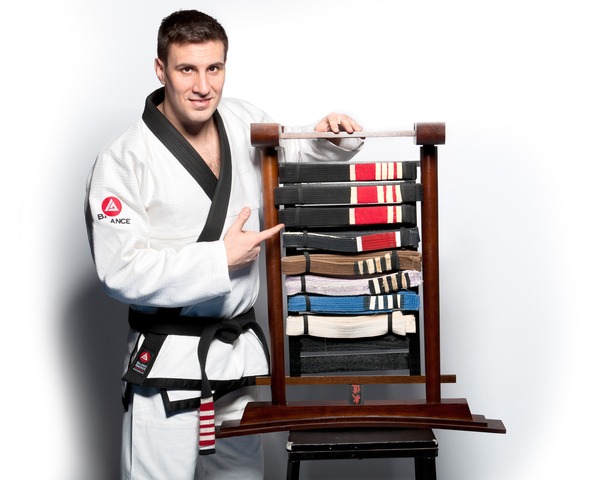
So we’re finally near the finish line. or should I say, near the starting line. You’re almost ready to crown a decade of hard work by getting a black belt tied around your waist. being a brown belt pretty much means you already know what Jiu-Jitsu is all about and are now trying to actually understand it. Still, there are some things that we can consider to be BJJ Black Belt Requirements that clearly mark the time you’re finally ready for that big promotion!
Getting a black belt is a big deal. Getting any belt in BJJ is, but let’s not fool ourselves, very few people actually get to black belt. The belt really signifies something, given that it will take you the better part of ten years to achieve it, and there’s hardly any chance of slacking around. At least if you want a legitimate black belt around your waist. that said, the BJJ black belt requirements have a lot more to do with things you haven’t considered before, than with techniques. Let’s explore what it really means to be ready for a Brazilian jiu-Jitsu black belt.
BJJ Black Belt – This Top Of The Food Chain
The BJJ black belt was quite the mythological creature up until a decade or so. there weren’t that many in the world, and getting to train with one was often a privilege. Nowadays, we do have more black belts and more chances to interact and train with them. As more and more people get nearer to the black belt level themselves, we can see certain BJJ black belt requirements emerge as being absolutely crucial to climbing on top of the BJJ food chain.
Now, by food chain, I mean the hierarchy of belts. Everyone becoming a black belt will actually be at the bottom of the black belt food chain. Why? Well, simply put, there are people that have been black belts for 30 years. You can’t touch them. You’re still a white belt to them, no matter how good your game is. Colored belts, on the other hand, are now your toys and the mats are your playground. Black belt is all about making Jiu-Jitsu your own and innovating and creating, helping the art evolve further.

BJJ Black Belt Requirements – An Overview
Speaking of BJJ black belt requirements, what does being a black belt in Jiu-Jitsu mean? Apart from all the individual and personal stuff, it means to everyone that has it, a black belt also means that you share certain characteristics with all other black belts.
Among other things, you’ll see black belts being effective. There’s absolutely no energy spent on doing anything. Oftentimes, a black belt will leave things to unfold, even it seems they’re in trouble. As you’ll see later on in our exploration of BJJ black belt requirements, they’re very rarely in actual trouble, and even then, they’re all right. Black belts are the epitome of lazy BJJ – until they decide they’re going to move. that’s when you’re going to feel like you’ve been caught in a tornado.
Technique-wise, a black belt can do just about anything, oftentimes pulling submissions out of thin air. That is because they understand how stuff works, literally, they know why submissions work, they know why guard retention works, why you can sweep, why passes fail… they understand what is going on and can play a game based on understanding the nature of Jiu-Jitsu rather than going through a roller deck of technique cards, trying to figure out the right one for the occasion.
On the feet, black belts will figure out extremely simplistic and downright embarrassing ways of getting you down to the ground. They also seem to be more slippery than an eel covered in olive oil, as finishing a black belt is an almost impossible task unless you’re one yourself. It can happen though!
Detailed Breakdown Of BJJ Black Belt Requirements
Let’s try and look at every aspect of BJJ black belt requirements that a brown belt should fulfill before they’re deemed ready for the “ultimate BJJ honor”. Given our previous guides for all the colored belts requirements and curriculums, we’ll try to keep the same format, even though it is challenging, given that black belts are about much more than just techniques. That is one topic that will reflect constantly on throughout our BJJ black belt requirements breakdown below.
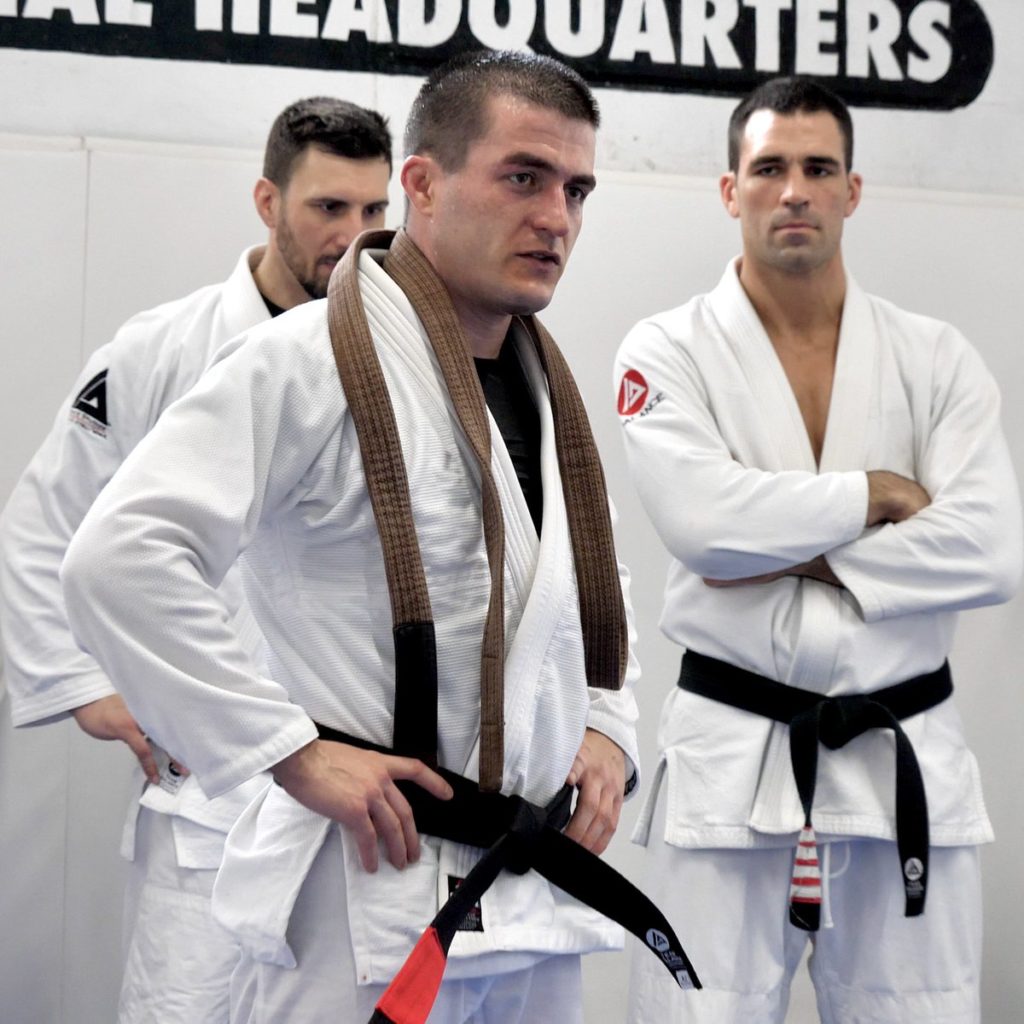
1. Movement
There’s a principle that comes from economics which, when modified a little bit reads something along these lines: 80% of the results come from 20% of the effort”. Well, black belts are absolute masters of this principle, oftentimes not even reaching the 20% and getting 100% in return. This is particularly true when it comes to how they move, or better said, position themselves when rolling/fighting.
In fact, there’s a concept back belts often like to use which is called mirroring. something you must become aware of, and perhaps even master as a brown belt is this concept. When an opponent moves something, anything, you want to do the same with the act opposite body part. In simple terms you’re mirroring their moves, fighting for the ame space. When you start doing this with micro moves you’re black belt material no doubt.
That leads me to another taint of black belts – Jedi mind tricks. As I said, black belts tend no to move much, but rather position themselves like they know the future. When they move, though, you suddenly find yourself having t do a bunch of things you don’t want to- you’ve been mind tricked. The reason why they can do this is actually very simple – black belts got way better timing than anyone else.
2. Bottom Game
DOwn in the realms of the guard, BJJ black belt requirements are that you know who to stay in any guard you choose, and either sweep or submit someone from there. IN many ways it is going back to basics, which is not the same as doing a basic closed guard only. Instead, every guard no matter how complex, closed, or open becomes basics, because as a black belt, you figure out why a guard works the way it does. Better yet, you’ll find the “why” behind all of them.
-
Closed Guard
The formula for a black belt closed guard is easy – get simple grips that provide you with as much control as possible, and use your legs to move the opponent. No need for doing crunches and the likes – simply use principles to make people fall, or give you submission options. Or, if you’re training traps and/or defense tactics, let everyone past the guard and catch them at their most vulnerable! Oh, and when you’re looking to become a black belt, you can feel free to play around with silyl stuff like the donkey guard as well.
- Pinning guards
- Guard anatomy 101
- Every guard is an option
- Donkey Guard
-
Closed Guard Options
BJJ black belt requirements from the closed guard are to submit someone without moving too much. In other words, instead of a 6-step armbar, you want to have a single step setup[ that leads from a closed guard into the finishing position of an armbar. that means understanding concepts like connection, Kuzushi, grip fighting, etc, to gain all the edge you need.
Given that you’ve been training for about 10 years, you’re injured. No black belt has come from white to black unharmed, and that means that doing certain things will be uncomfortable, or even painful. Finding out where it hurts the least is the cornerstone of a black belt’s opens guard game. Apart from understanding the anatomy of guards, stuff like the reverse X guard, stretch guard, and reverse DLR lockdown are examples fo guards that are easy to retain, yet offer extremely many different attacks, mostly in the form of submissions.
- Why Open Guards Work
- Stretch Guard
- Reverse X-Guard
- Octopus Guard
- Reverse De la Riva Lockdown
-
Open Guard Approach
How exactly do you attack from open guards? Well, make sure you’re unpassable first, and then, let people try and pass. that will provide you with grips and posture breaks without even trying, as they battle to go through the layers of your guards. Simple stuff like Bulldozer sweeps and multi-directional attacks work perfectly here. If there’s anything you need to e focusing on it has to be winning the grip fight from the get-go.
As a brown belt looking to turn black, it is time to have fun in the half guard. Mastering different and lesser-known half guards are among the BJJ black belt requirements for everyone. Playing from such positions as the quarter guard, and still being able to trick people into submissions and sweeps is the mark of a true black belt. Some would say Jedi.
3. Top Game
Pressure! More pressure! IF you want to be a black belt, you have to learn how to be heavy. However, you don’t just need to make people uncomfortable – you need to be able to make them miserable and in pain. Regardless of which top position you’re playing, BJJ black belt requirements are that you stay there and cook folks until such time they decide to give you a submission just to end their suffering, or you do it for them out of mercy.
-
Side Control
If there’s one pressure position that truly defines being a black belt, it is side control. When you get there, you are to be as comfortable as in mount, back, or Ashi Garami. Begin heavy, staying there and using your head as a post and various other innovative ways of torturing people, as well as reverting back to moves from other grappling martial arts to enhance your control are true marks of a black belt.
The Mount
BJJ black belt requirements are all about smothering people from the mount. The Crofssface, done correctly will be extremely useful to you when doing that. Pressuring people from all levels of the mount is also huge, with a focus on chest compressions to render them immobile. Moreover, every escape should feel pointless, with you gaining even more control after every failed attempt.
Back Control
Turning into the unshakable backpack that moves up and down behind people is the best t description of a black belt’s back mount game. Moving p and down means that everything is a go, from rear triangles, through chokes and armlocks all the way to twister and truck attacks on the legs. Moving up and down behind someone while constantly threatening them and never losing position can safely be called BJJ black belt requirements for the back mount.
- Rear triangle
- Kimura Trap
- Crab rides
-
Knee On Belly
Thinking outside the box here. the knee on belly position is great, but if you think about it, you can do the same position propping your knee or shin against just about anything. In other words, it means knee on the neck, knee on the shoulder, on the elbow, on ribs… everything that causes pressure and pain, and opens up it transitions or direct submission entries.
- Pure Pressure
- Pinning
-
Turtle Attacks
The turtle is a torturous position for everyone to break down,. even high brown and black belts. The trick here lear as part of BJJ black belt requirements is to attack in transition. The moment a person from turtle lets a shoulder, hip, or ankle sneak a peek, a black belt will capitalize, attacking during the transition that inevitably follows. Stuff-like cradles and front headlock chokes are usually how black belts open people up with ease.
- Mizzou choke
- Darce grips
- Cradles
-
Guard Passing
BJJ black belt requirement in terms of passing the legs is to be able to do it against anyone, using any passing modality. Passing motion should be seamless, heading in all four directions, and using all three different passing systems (loose, tight, and submission passing). The real mark of a black belt passing guard is at while they’re doing it, you’re powerless to sweep or submit them from the bottom. If you haven’t developed such ability yet, you still have some way to go to fulfill certain BJJ black belt requirements. Every time you pass the guard as a black belt, you should be a riddle to people.
- Leg Locks vs. Guards
- Eradicating passing mistakes
- Dilemma attacks
- Passing flexible people
- Passing the lockdown
- Hip Switch pass
- Butterfly guard passes
- Can Opener
4. Standing
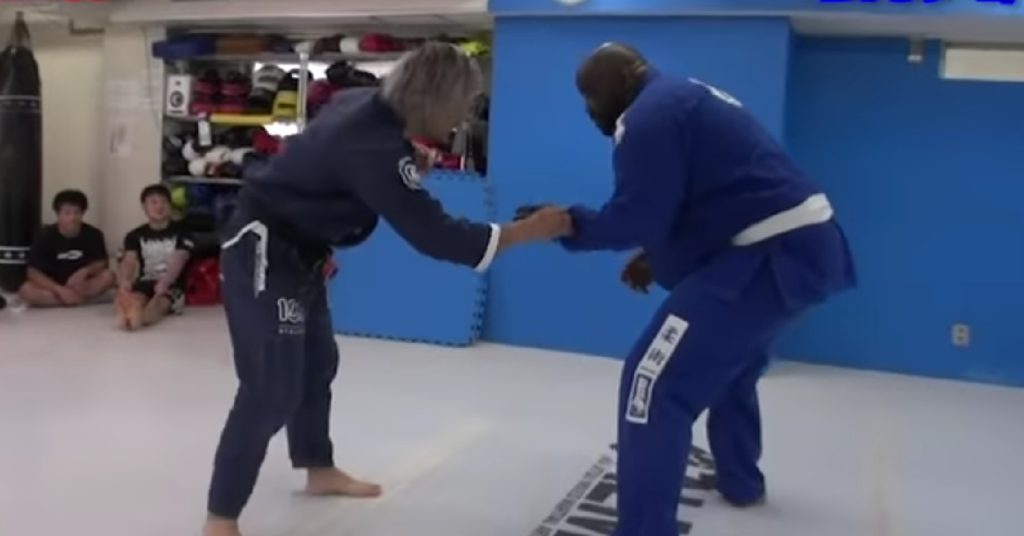
- Safada takedown
- Train wreck takedown
- Chain Wrestling
- Standing Submissions
- Standing Guillotine
- Giant killers
- Russian Tie
- Victor roll
- Drop Seio Nage
5. Submissions
With submissions it is not about whether a black belt will catch one, ti is a matter of when. And, when you’re looking to become a black belt you should also think about when you’re going for a submission much more than the technique you’re doing. As mentioned, timing is everything in a black belt’s game, and figuring it out will completely change your submission game. That said, obscure submission holds from other grappling martial arts like catch wrestling and Sambo are often the subject of experimentation of black belts.
- Punch chokes
- Ultra tight armlocks
- Cobra choke
- Bulldog Choke
- Dogbar
- Suloev stretch
- Catch Wrestling Submissions
- Choke mechanics
- “Low” percentage moves
- Rolling armbar
- Sambo submissions
- Bear trap
6. Escapes
There is something about high brown belts and black belts and escapes. They just seem to enjoy being in bad spots a little too much, if you know what I mean. While being able to deal with any positional or submission attack is a part of BJJ black belt requirements, you’ll often find advanced grapplers intentionally going to bad spots in order to figure out obscure ways of escaping, that often borders on crazy. Like, for example, standing up from all kinds of tough spots.
- Side control bottom (reversals, submission escapes)
- Mount bottom (frames and levers, submission defense)
- Back Control bottom (Defending Berimbolos, twister, and truck escapes)
- Turtle bottom (Headlock escapes, rolling, reversals)
- Knee on Belly (enjoying discomfort)
- Submission escapes (Late escapes, choke escapes, hitchhikers)
7. Mindset
I’ve already touched on most of the subjects that make up a black blet’s mindset, but I’ll try and go into them a bit more here. For starters, everything is grappling. Sambo, Judo, Wrestling, even Sumo or Icelandic Glima, if there’s something useful a black belt will find a way to integrate it into their game. Having an open mind and not concern yourself with things like tapping out or points, especially during rolls are definitely among the more important BJJ black belt requirements.
In terms of the technical approach, there’s everything to learn. Knowing that everything is still open for improvements and learning more about each move is truly a mark of someone who deserves a black belt. Everything that happens, or you see happen when other rolls should leave you with a question that you’re looking to answer. That is how a black belt grows and evolves, by answering the questions that make Jiu-Jitsu “tick”.
Finally, there’s hardly anyone that enjoys BJJ as much as black belts do! Every roll or match, whether it is against other black belts or just students with colored belts is fun and is offering something for a black belt to improve. Even if it just for the sheer fun of it, they’ll enjoy every second of grappling and will often come up with funny stuff t do and say along the way.
8. Self-Defense
There’s not much to say about BJJ black belt requirements in terms of self-defense. Since there is no craziness like gun and knife defense as part of any curriculum worth exploring in BJJ, self-defense-wise you’re pretty untouchable for most people in a one-on-one situation.
9. Drills And Rolling
It can become a bit tedious for black belts to roll with people, especially if they’re the only ones in an academy. Of course, students catch up fast, but still, experimenting with handicap rolls, but until they do, rolls can still be fun and interesting. Handicap rolls where they decide to only use one move, or don’t use their favorite move, or keep their eyes closed or use one arm only and stuff like that are marks of someone ready to be a black belt.
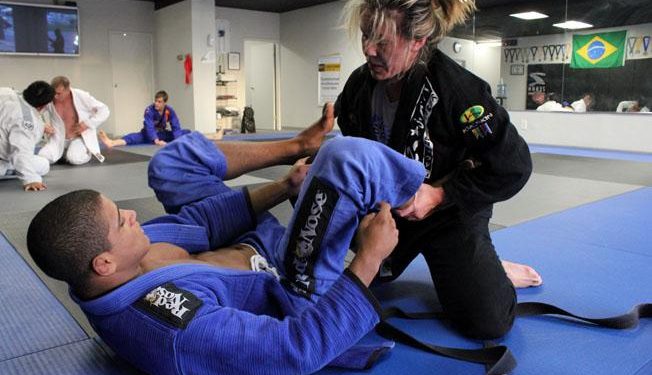
There are actually no BJJ black belt requirements in terms of rolling apart from keeping everyone you roll with safe. That said, very often people that are black belts, or close to black belt, tend to specialize in stuff that’s unclear to the others, like mirroring, or certain grip positions or even body positions that prevent opponents from doing anything.
10. Behavior
With black belts, how they behave on the mats is more important than anything else they do. Even if they are not teachers, but competitors only, black belts have to know they are an inspiration for everyone on the mats. with social media, there’s an even greater reach that has to be respected. That simply means black belts should be approachable, should answer everything they know how to, should not act as if they’re gods on the mats. They should just be one of the bunch, who just happens to know more about BJJ than the others.
In rolling, behavior will reflect a black belt’s goals. With competitors, you better watch out for, well, everything,. With those looking to teach you something, you’ll be having lots of fun but probably end up with more questions than answers at the end. Those rolling to perfect something of their own will be probably thanking you at the tend, even if you don’t know why. That’s what being a black belt is al about.
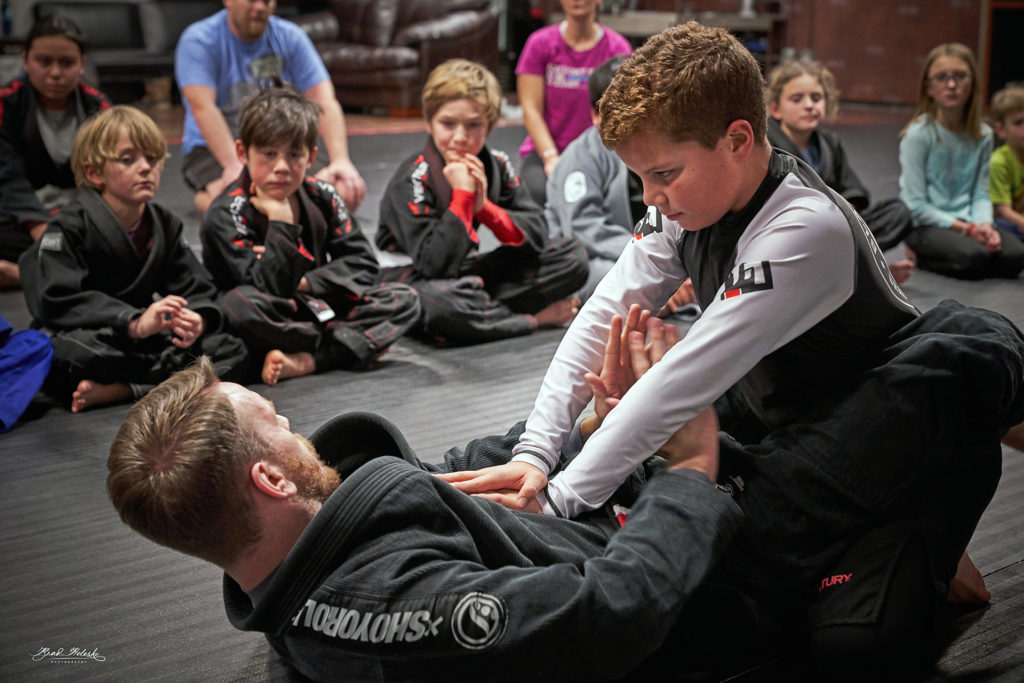
11. Optional
OF course, when you’re a black belt in Brazilian Jiu-Jitsu, apart from teaching others, you don’t really have to do anything else. I guess there are those black belts that have never competed, but in truth, almost all people that have a black belt have fought at least a few times at different belt levels. With that in mind, competing as a black belt is purely down to choice. Once again it has lots to do with age and injuries as well as with a black belt’s long-term goals.
– Competing
When ti comes to competing, most black belts will try their hand. Running into someone who is a world champion and legend in your sport in your division is probably one of the most fun things that can happen at a tournament in black belt divisions.
– Conditioning
BJJ black belt requirements when it comes to strength and conditioning are actually really straightforward – be able to roll on the mats and teach. That means injury management and getting stronger through exercises that don’t demand lots of energy from your body are mandatory. for training, bodyweight workouts, and best of all, gymnastics should be at the top of your list. Given that as a high brown or black belt you’re already a walking injury collection, you should consider donating your body to science after death. Apart from doing that, focusing on stretches for guard, and recovery methods like cryotherapy and sauna are your best bet!
Conclusion
BJJ black belt requirements are probably the toughest to pinpoint. Knowing Jiu-jitsu is the easy part – everyone that spends 10 years training will know a lot about it, even if they don’t go through the belt system. being a black belt comes with a lot of other responsibilities, from the safety of others to make sure you help everyone that’s on your mats evolve, as well as help, evolve the entire sport of Jiu-Jitsu. A big ask, but it is all fun and games after you get the black belt tied around your waist!


![Darce Choke Encyclopedia – Origins, Mechanics and Variations [2025] BJJ, choke, Brabo, BJJ Darce Choke, D'arce Choke, Darce BJJ Choke](https://bjj-world.com/wp-content/uploads/2017/11/JungPoirierLeeYahoo-218x150.jpg)










![Get Off My Legs Gringo Craig Jones DVD Review [2025] Get Off My Legs Gringo Craig Jones DVD Review](https://bjj-world.com/wp-content/uploads/2025/03/get-off-my-legs-gringo-craig-jones-dvd-review-218x150.png)

![Leg Lock Entries Helena Crevar DVD Review [2025] Leg Lock Entries Helena Crevar DVD Review](https://bjj-world.com/wp-content/uploads/2025/03/leg-lock-entries-helena-crevar-dvd-review-218x150.png)
![Special K Guard Neil Melanson DVD Review [2025] Special K Guard Neil Melanson DVD Review](https://bjj-world.com/wp-content/uploads/2025/03/special-k-guard-neil-melanson-dvd-review-218x150.png)
![Arm Bar It All Shawn Melanson DVD Review [2025] Arm Bar It All Shawn Melanson DVD Review](https://bjj-world.com/wp-content/uploads/2025/03/arm-bar-it-all-shawn-melanson-dvd-review-218x150.png)
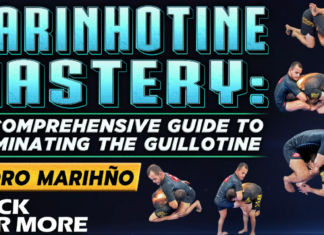

![Arm Bar It All Shawn Melanson DVD Review [2025] Arm Bar It All Shawn Melanson DVD Review](https://bjj-world.com/wp-content/uploads/2025/03/arm-bar-it-all-shawn-melanson-dvd-review-100x70.png)




![10th Planet Leg Locks Jeremiah Vance DVD Review [2025] 10th Planet Leg Locks Jeremiah Vance DVD Review](https://bjj-world.com/wp-content/uploads/2025/01/10th-planet-leg-locks-jeremiah-vance-dvd-review-100x70.png)
![Countering Triangles And Omoplatas Adam Mazin DVD Review [2024] Countering Triangles And Omoplatas Adam Mazin DVD Review](https://bjj-world.com/wp-content/uploads/2024/10/countering-triangles-and-omoplatas-adam-mazin-dvd-REVIEW-100x70.png)


![Eoghan O’Flanagan Bundle Down Right Sloppy Jiu-Jitsu Review [2024] Eoghan O'Flanagan Bundle Down Right Sloppy Jiu-Jitsu Review 2024](https://bjj-world.com/wp-content/uploads/2024/09/down-right-sloppy-jiu-jitsu-eoghan-oflanagan-bundle-100x70.png)
![Wristlocks From The Top Pete Letsos DVD Review [2025] Wristlocks From The Top Pete Letsos DVD Review](https://bjj-world.com/wp-content/uploads/2025/01/wristlocks-from-the-top-pete-letsos-dvd-review-100x70.png)
![Giancarlo Bodoni DVD Bundle Essential Connections Full Review [2024] Giancarlo Bodoni DVD Bundle Essential Connections Full Review](https://bjj-world.com/wp-content/uploads/2024/09/giancarlo-bodoni-dvd-bundle-essential-connections-100x70.png)

![The Closed Guard Malachy Friedman BJJ DVD Review [2025] The Closed Guard Malachy Friedman BJJ DVD Review](https://bjj-world.com/wp-content/uploads/2025/01/closed-guard-malachy-friedman-bjj-dvd-review-100x70.png)
![Reverse De La Riva System Mikey Musumeci DVD Review [2024] Reverse De La Riva System Mikey Musumeci DVD Review](https://bjj-world.com/wp-content/uploads/2024/11/reverse-de-la-riva-system-mikey-musumeci-dvd-review-100x70.png)
![Tiny Woman Guide To The Guard Ann Kneib DVD Review [2024] Tiny Woman Guide To The Guard Ann Kneib DVD Review](https://bjj-world.com/wp-content/uploads/2024/11/tiny-woman-guide-to-the-guard-ann-kneib-dvd-review-100x70.png)
![Grappling Takedown Dominance Brandon Ruiz DVD Review [2025] Grappling Takedown Dominance Brandon Ruiz DVD Review](https://bjj-world.com/wp-content/uploads/2025/01/grappling-takedown-dominance-brandon-ruiz-dvd-review-100x70.png)

![Dynamic De La Riva Guard Otavio Sousa DVD Review [2025] Dynamic De La Riva Guard Otavio Sousa DVD Review](https://bjj-world.com/wp-content/uploads/2025/02/dynamic-de-la-riva-guard-otavio-sousa-dvd-review-100x70.png)
![Mastering Control From Top Position Trent Hidlay DVD Review [2024] Mastering Control From Top Position Trent Hidlay DVD Review](https://bjj-world.com/wp-content/uploads/2024/11/control-from-top-position-trent-hidlay-dvd-review-100x70.png)
![Just Pass Jay Rodriguez DVD Review [2024] Just Pass Jay Rodriguez DVD Review](https://bjj-world.com/wp-content/uploads/2024/11/just-pass-jay-rodriguez-dvd-review-100x70.png)
![Guard Busters Bill Cooper BJJ DVD Review [2025] Guard Busters Bill Cooper BJJ DVD Review](https://bjj-world.com/wp-content/uploads/2025/03/guard-busters-bill-cooper-bjj-dvd-review-100x70.png)
![Welcome To The Darce Side Travis Moore DVD Review [2025] Welcome To The Darce Side Travis Moore DVD Review](https://bjj-world.com/wp-content/uploads/2025/01/welcome-to-the-darce-side-travis-moore-dvd-review-100x70.png)

![Advanced Immortal Clinch Matt Brown DVD Review [2024] Advanced Immortal Clinch Matt Brown DVD Review](https://bjj-world.com/wp-content/uploads/2024/09/advanced-immortal-clinch-matt-brown-dvd-review-100x70.png)

![The Buchecha Gi Takedown System DVD Review [2025] The Buchecha Gi Takedown System DVD Review](https://bjj-world.com/wp-content/uploads/2025/01/buchecha-gi-takedown-system-dvd-review-100x70.png)